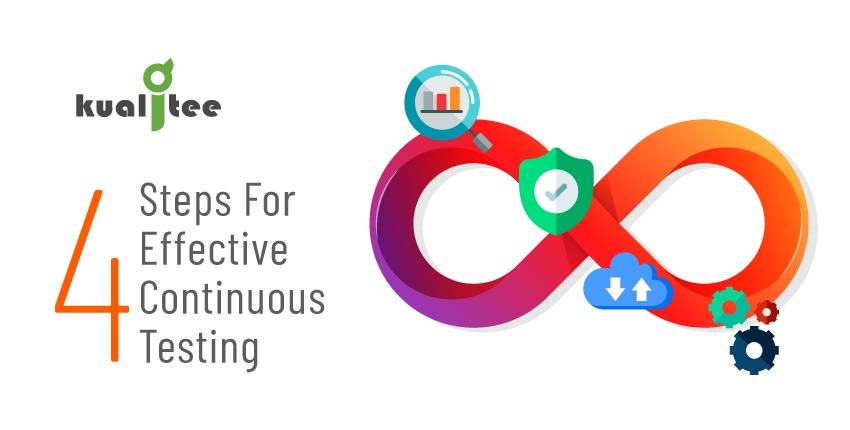Traditional testing is performed at the end of the development cycle. This results in late detection of defects that causes production delays. On the contrary, continuous testing encompasses running tests throughout the complete software development procedure. This allows the developers to recognize and solve the present problems, as early as possible. It also assists in delivering continuously upgraded and always seamless apps to the customers.
However, changing something you are habitual of doing is not an easy thing. Continuous testing is no exception. This is not just one step, but all the best practices and the series of steps to successfully apply within your development team. A good software testing tool helps you to attain your desired objectives.
Keeping this scenario in mind, we are presenting you the list of 4 simple steps for effective continuous testing.
1. Form a Cultural Commitment to Quality and Collaboration
People come prior to processes and creating the correct mindset comes prior to developing the right tactics, with any transformational change. Successful continuous testing needs a teamwide, cultural commitment to quality and collaboration. The concept that QA owns testing and developers own development certainly leads to the sorts of issues- such as; flawed user experiences and delayed releases. The businesses cannot afford such things in this digital era. Rather than this, test engineers and developers must have a shared understanding of the baseline level of efficiency and quality they want to maintain in the developmental process.
2. Implement Wider Variety of Tests, Anchored by Automation
It has been mentioned previously that continuous testing entails implementing a wider range of tests throughout the testing procedure. This includes production testing, regression testing, automated end-to-end testing, integration testing, and unit testing. By nonstop administration of tests at a different point in the delivery pipeline, you can recognize and resolve issues including security, performance, and functionality. You are advised to do this before they turn into the sort of roadblocks that causes delays in your release.
Even though you should struggle for variety when it comes to the sorts of tests you apply, you should put in the effort for consistency when it comes to the notion of automation. Automation is important when you are serious regarding succeeding with continuous testing. This automation testing entails writing a test script that interrelates with the functional elements on a webpage without human interaction. This helps you to deliver enhanced reliability and scalability in comparison with the manual testing. However, it also frees your manual tester to concentrate more on value-added activities like exploratory testing.
3. Leverage Cloud for Scalability & Breadth
Only setting up and sustaining the infrastructure, virtual or physical, essential to test across the ever-expanding universe of mobile platforms, operating systems and browsers is both difficult and costly. This is prior to considering the requirement to scale your test environment to run tests in parallel. It is an intimidating challenge for even the most mature enterprise development team.
Continuous testing and cloud go hand in hand. Development teams can unburden all infrastructural headaches they would otherwise be forced to handle on a daily basis by leveraging a cloud-based cross-browser testing platform.
4. Create a Strategic Approach to Analytics
Continuous testing, executed optimally, needs a premeditated approach to analytics. Developers should vigorously look to fit in a layer of analytics within the testing procedure, such that insights can be implemented across the product team. Smartly layered analytics can pour light on various functional issues. This entails browsers and mobile platforms that are most frequently experiencing failure and if an app’s test results are reliable.
Other than only functional testing, teams also can leverage analytics to measure performance and user experience, investigating the way user experience is obstructed by heavier traffic loads and how total app performance is wedged by latest updates to the code.


























